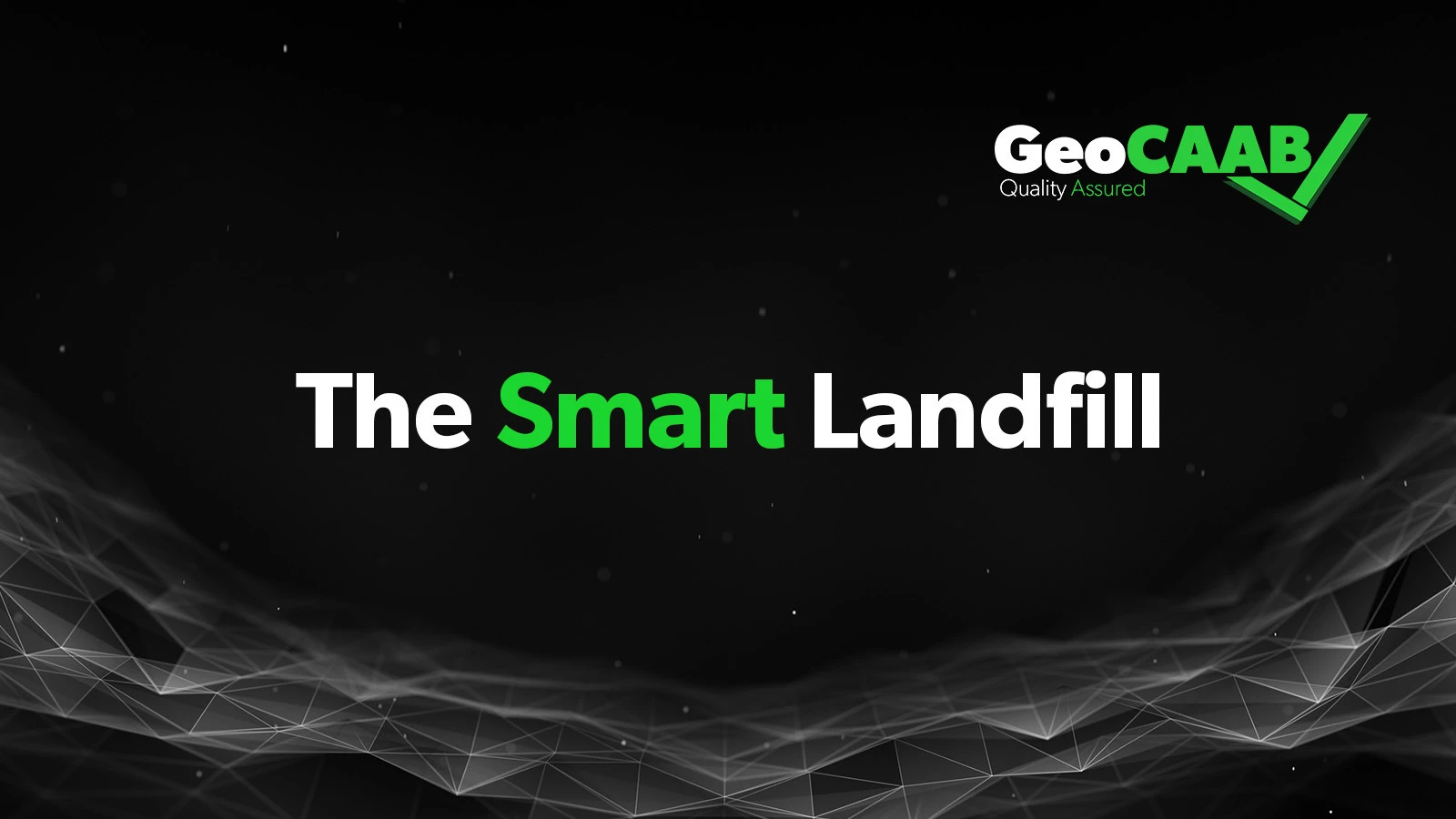
Table of Contents
The Smart Landfill: What Inspectors Will Expect by 2030
By 2030, landfill inspections will rely on drones, satellites, and real-time sensors. Learn how GeoCAAB future-proofs your QC data for the next generation of regulatory technology.
The Future of Landfill Inspections Is Already Here
Landfill inspections are undergoing a technological transformation. Regulators, environmental consultants, and watchdog groups are rapidly adopting high-tech tools like drones, fenceline sensors, and satellites to track emissions and assess integrity.
By 2030, these tools won’t be “emerging”—they’ll be expected.
If your quality control (QC) data isn’t digital, timestamped, and geolocated, you may not be able to meet tomorrow’s inspection standards—or defend against what satellites and sensors reveal.
Technologies Reshaping the Inspection Landscape
🚁 Drones/UAS The EPA has endorsed unmanned aerial systems for methane leak detection and thermal imaging inspections. Source - MSW Landfill: Unmanned Aircraft System (UAS) Technologies
📡 Fenceline Monitoring States like Colorado and California are piloting continuous air monitoring systems around landfills, capable of detecting methane spikes in real time. Source – MSW Landfills: Fenceline Monitoring
🛰️ Satellite Emissions Tracking New satellite data shows that landfill methane emissions are often 62% higher than reported. This technology is already shaping public dashboards and environmental accountability. Source - Satellite data reveals true scale of methane pollution
What It Means for Landfill Stakeholders
These technologies don’t just impact how regulators detect problems—they change how operators must document and defend their compliance. Here’s what various stakeholders will face:
| Role | 2030 Expectation | How GeoCAAB Prepares You |
| Landfill Owners | Satellite dashboards tracking surface emissions | Integrate QC data with emissions monitoring, including GPS-tagged welds and panel locations |
| Regulators/Inspectors | Remote sensors detect anomalies before a site visit | Provide timestamped, location-based digital audit trails on demand |
| Environmental Consultants | ESG reporting demands transparent, real-time field data | Deliver verified reports that align with emissions and monitoring technologies |
GeoCAAB’s GPS-enabled tracking system lets you show exactly what's beneath areas flagged by remote sensing—linking emission hotspots to specific panel installations, seam welds, or repairs.
The Smart Landfill Starts with Smart QC
By the time these technologies become industry standard, it’ll be too late to play catch-up.
The shift to digital QC isn’t just about efficiency—it’s about survivability in a landscape driven by environmental scrutiny, investor demands, and automated oversight.
Be Ready for 2030. Start with GeoCAAB.
GeoCAAB equips you with the tools to align with the future of landfill inspection—from digital records and GPS tracking to real-time updates and secure data sharing. It’s not just compliance—it’s clarity, credibility, and confidence in a high-tech regulatory world.
Want to see how GeoCAAB aligns with your future goals? Schedule a demo or contact us to explore how we help you meet the next generation of landfill inspection standards, starting today. Contact GeoCAAB
GeoCAAB: Experience the Next Revolution in Geosynthetics
We are a computer-aided as-built software, built by the field, for the field, that utilizes GPS mapping to maximize efficiency, accuracy, and organization.